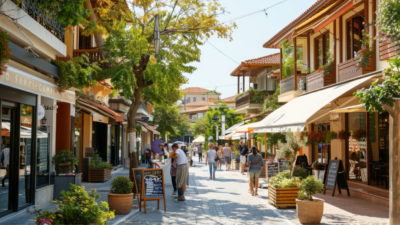The 2024 holiday shopping season is expected to be robust, fueled by consumer optimism and steady spending driving growth across major shopping events. Thanksgiving spending is anticipated to rise by 1.8%, followed by a 2.8% boost on Black Friday, and Christmas sales likely rising by 3.0%. Overall holiday sales are projected to grow by 2.9% compared to last year, which is in line with the steady 3.2% retail sales growth this year. Falling inflation has kept sales solid, yet elevated prices remain a concern, with 90% of holiday shoppers noting inflation will impact their spending decisions.
Early shopping trends are on the rise, with 78% of holiday shoppers starting their gift-buying sooner than usual to take advantage of early deals and promotions. Retailers are responding by stocking holiday items earlier than ever—Halloween merchandise hitting shelves in August, while Christmas and Hanukkah decorations appearing as early as September. With just 27 days between Thanksgiving and Christmas, retailers offering early deals could win over shoppers planning to purchase online and get their items shipped. This year, 10% more shoppers are aiming to finish their holiday shopping by mid-December, setting the stage for a busy post-Thanksgiving rush.
Despite these pressures, consumers are showing resilience. Shoppers plan to spend an average of $706 on gifts, marking the highest since 2018, while 37% report they expect to pay more overall this year, with 42% attributing that increase to higher prices. Brick-and-mortar stores continue to anchor the holiday shopping experience, with 92% of consumers planning to shop in physical locations. Nearly all in-store shoppers also plan to shop online from the same retailers, making brick-and-mortar locations a key driver of omnichannel shopping.
Investors might face a challenging outlook for department stores that still need to deliver the value consumers seek. On the other hand, discounters like T.J. Maxx, Ross Dress for Less, and Burlington are poised to see increased foot traffic. Brands like Hoka, On Holding, and Skechers are set to gain significant momentum this holiday season, thanks to their strategic investments in innovation that have helped them capture market share from Nike. Meanwhile, chains like Bath & Body Works and Five Below, which depend heavily on in-store traffic to boost sales, could feel the pinch of the shorter shopping window.
Holiday shopping has evolved beyond just buying gifts — it’s now about creating memorable experiences. This season, an estimated 200 million consumers, especially Gen Z and Millennials, are expected to flock to malls and shopping centers not only to shop but to dine, enjoy seasonal activities, and fully immerse themselves in the holiday atmosphere. Food and beverage sales are projected to rise by 6% bringing total seasonal spending to an anticipated $1.66 trillion. With 70% of shoppers feeling financially stable or better off than last year, and with inflation easing, retailers are poised for a strong season. This optimism underscores a resilient consumer base that is ready to make this holiday season one of memorable experiences and solid spending.

 Nicole Larson
Nicole Larson


 Anjee Solanki
Anjee Solanki